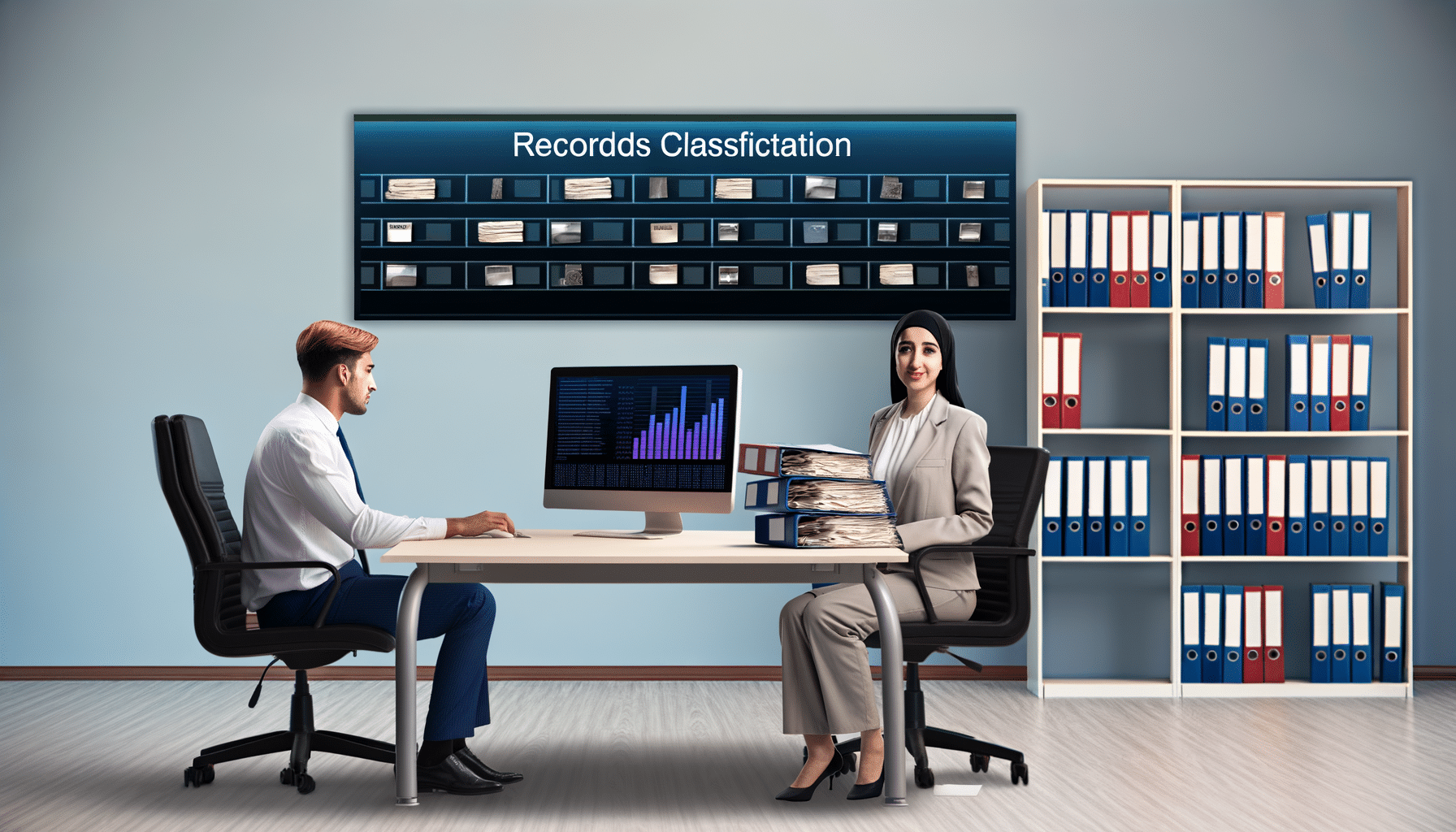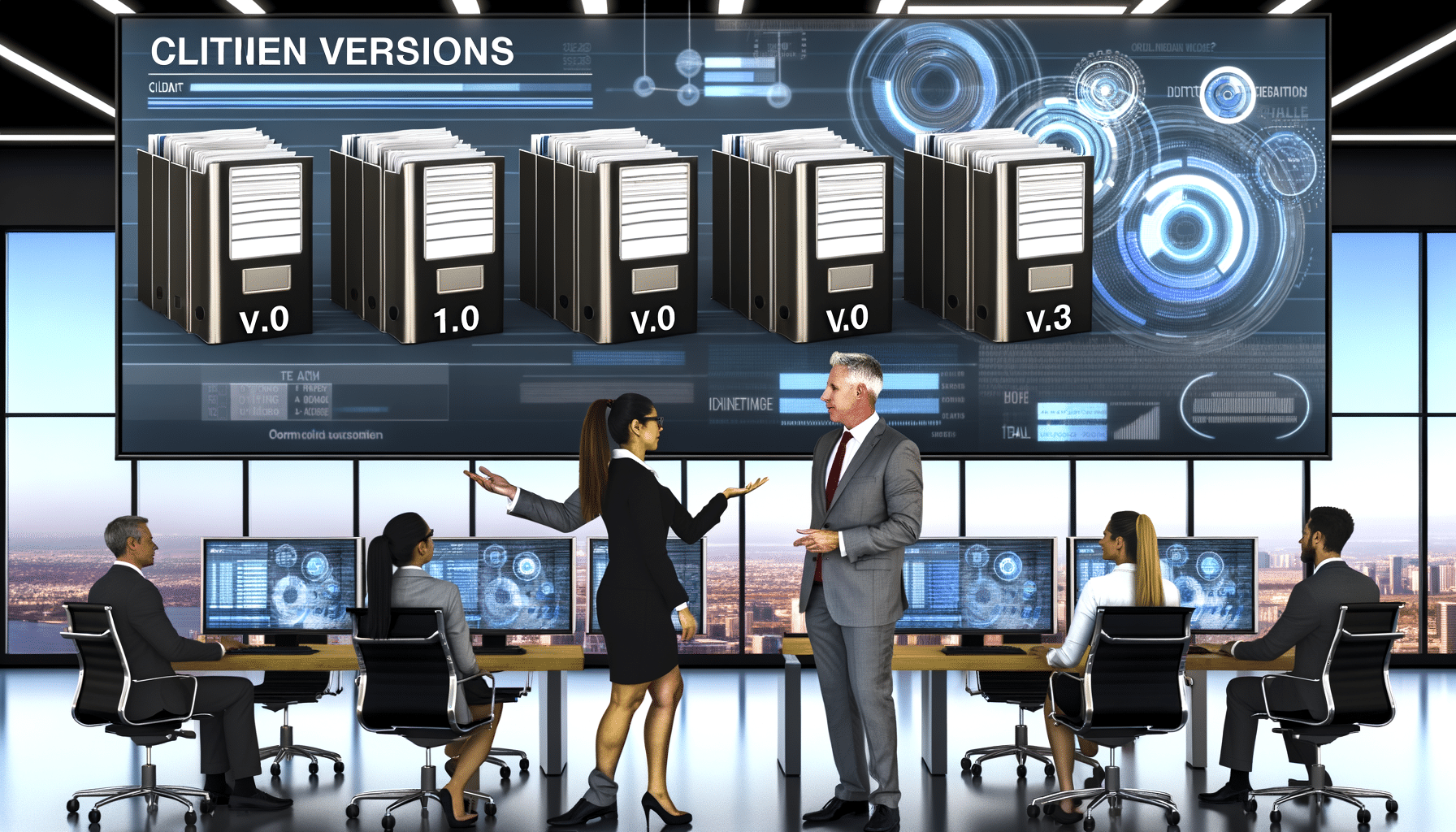- Physical Records Management
- November 17, 2024
Quick Guide to Records Classification

Introduction
Record management has always been a pivotal component for any organization, serving both as a support mechanism and a strategic advantage. In my journey with RecordsKeeper.AI, I have seen firsthand how effective records classification can transform organizational efficiency. What if there was a way to turn a daunting task into a seamless experience? This blog unravels the practical approaches to records classification, offering a quick guide to simplify this essential process.
Why Records Classification Matters
At its core, records classification is the systematic categorization of documents and files for ease of retrieval and management. Think about how chaotic a library would be without classification! Likewise, in any business environment, proper records classification can significantly impact productivity and compliance adherence.
With well-structured records, you can swiftly access relevant information, saving valuable time and resources.
Proper classification ensures that sensitive records are handled with extra care, aligning with security policies and standards.
Regulatory mandates such as GDPR and HIPAA require organizations to manage data in a classified format to ensure compliance.
Key Approaches to Classification
Automated Classification
In the age of technology, why rely solely on traditional methods when AI can revolutionize the classification process? At RecordsKeeper.AI, automated classification uses artificial intelligence to self-sort documents based on predefined criteria, reducing human error and speeding up the process.
Functional Classification
Organizing records according to business functions or processes is a classic approach. This method not only supports operational needs but also enhances accountability.
Hierarchical Classification
Hierarchical structuring allows records to be classified from broad categories down to specific ones. This is especially useful in complex organizations with varied operations.
Best Practices for Effective Records Classification
1. Conduct a Needs Assessment – Understand the nature of records and their usage in your organization to tailor a classification system accordingly.
2. Adopt Consistent Naming Conventions – Consistency in record naming can lead to better retrieval and reduced redundancy.
3. Leverage Technology – Platforms like RecordsKeeper.AI offer advanced solutions that combine AI and Blockchain technologies for an automated, secure, and compliant classification process.
4. Update Regularly – As business needs evolve, so should your classification system. Regular reviews ensure that the system remains relevant and effective.
Overcoming Common Challenges
Despite its apparent benefits, records classification can be fraught with challenges. However, these can be mitigated with informed strategies:
– Complexity: Break down the classification process into manageable chunks using straightforward guidelines.
– Resistance to Change: Educate team members about the benefits of a well-organized classification system, encouraging buy-in from all stakeholders.
– Integration Issues: Choose interoperable tools that can easily integrate with existing systems for seamless operations.
Conclusion
In conclusion, an effective records classification system is far more than a regulatory checkbox; it is a strategic asset that can drive productivity and compliance. By adopting modern practices and leveraging technology like RecordsKeeper.AI, organizations can turn record-keeping from a mundane task into a meaningful advantage. If you’re ready for a transformation, I invite you to delve deeper into the RecordsKeeper.AI spectrum and explore the full potential of our platform.
Stay tuned with me, Toshendra Sharma, for more insights on entrepreneurship and tech innovation, as we continue to drive RecordsKeeper.AI to new heights. Transforming record management is just the beginning.
Toshendra Sharma is the visionary founder and CEO of RecordsKeeper.AI, spearheading the fusion of AI and blockchain to redefine enterprise record management. With a groundbreaking approach to solving complex business challenges, Toshendra combines deep expertise in blockchain and artificial intelligence with an acute understanding of enterprise compliance and security needs.
Related Posts

Managing Paper Records in a Digital Office
Handling remaining paper records in digital environments.
- November 28, 2024

Organizing Records for Multiple Client Versions
Tracking different versions of client documentation effectively.
- November 27, 2024
Archives
- January 2025
- December 2024
- November 2024
- October 2024
- September 2024
- August 2024
- July 2024
- June 2024
- May 2024
- April 2024
- March 2024
- February 2024
- January 2024
- December 2023
- November 2023
- October 2023
- September 2023
- August 2023
- July 2023
- June 2023
- May 2023
- April 2023
- March 2023
- February 2023
- January 2023
- December 2022
- November 2022
- October 2022
- September 2022
Want to get more content like this?
Signup to directly get this type of content to your inbox!!
Latest Post
Document Control for Equipment Maintenance
- January 20, 2025
Managing Records for Multiple Clients
- January 19, 2025
Handling Conference Documentation
- January 18, 2025
Setting Up Department Record Reviews
- January 17, 2025





